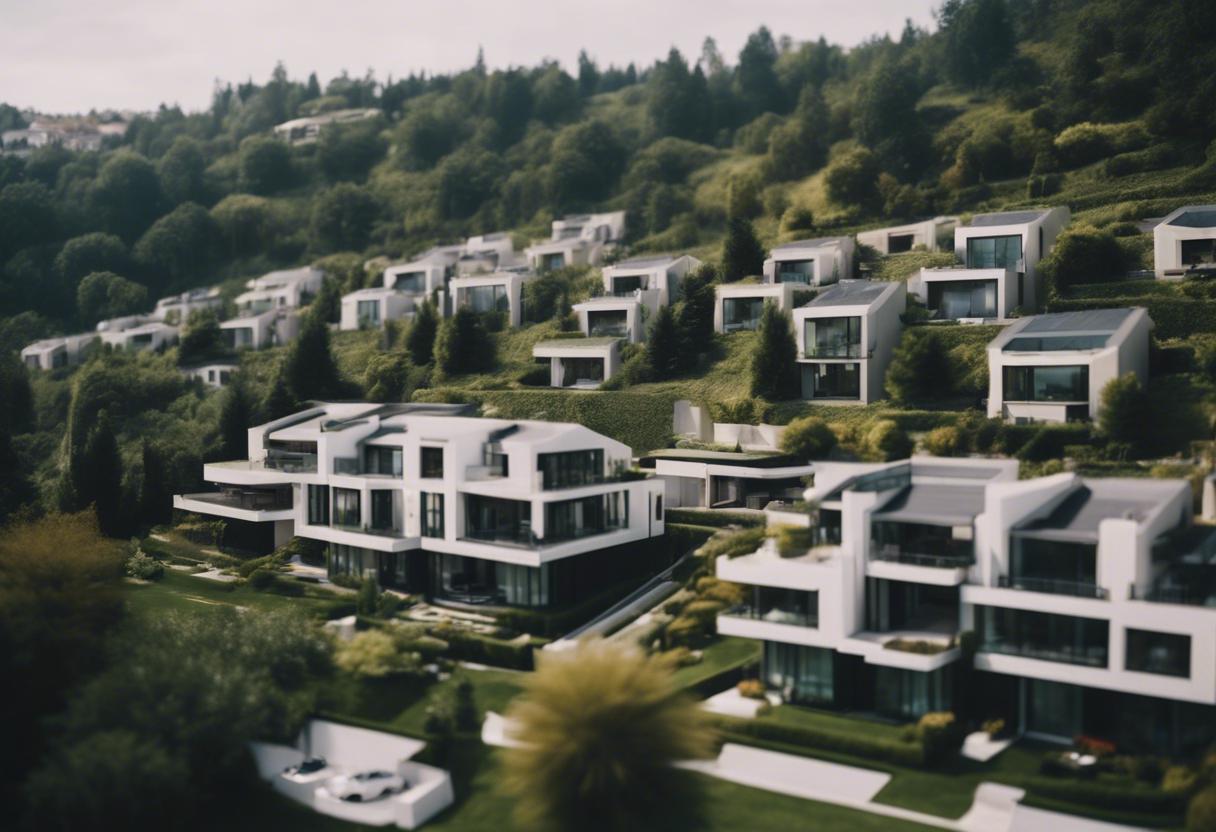As autumn takes hold and we start to use our heating systems more, it becomes increasingly clear how heavily Ireland relies on imported fossil fuels to meet most of our heating requirements. This reliance leaves our country susceptible to the fluctuating gas markets. The recent turmoil following Russia’s assault on Ukraine in February 2022 has brought this issue into stark focus.
And it doesn’t stop with gas. Ireland’s electricity prices surpass those of the European Union average. Analysis of recent data by the Commission for Regulation of Utilities (CRU) shows that Ireland’s domestic electricity costs ranked as the ninth highest in Europe, while its domestic gas prices came in fifth. Even though we have made progress in integrating renewable energy sources such as onshore wind and solar PV into the grid, we continue to depend largely on imported gas to power our electricity supply. Out of our total energy consumed, renewables only constitute 14%, with imported fossil fuels still accounting for a massive 83%. The more green energy we can produce ourselves, the less we have to be concerned about price hikes that we cannot influence.
While the economic impact is what usually grabs economists’ attention, energy costs can fluctuate considerably for individual homeowners. Needless to say, the actual cost of energy services is dictated by factors such as the type of house you reside in and your earnings. The ‘average’ household in Ireland uses 4,200 kWhr of electricity each year. However, most people would struggle to define what a kWhr entails, or identify which household appliances use the most energy.
Despite our houses being poorly insulated – with buildings constructed prior to 2005 often being rated C or lower on the Ber scale – Ireland’s population doesn’t have a great understanding of energy literacy. The majority lack an understanding of how to decipher energy labels on appliances or even their own utility bills. With this in mind, it’s not surprising that there is skepticism towards smart meters, often seen as another method for utilities to extract more money from their customers. Despite the CRU claiming that smart metering should foster “more educated energy decisions”, ongoing reports suggest that users still face challenges in accessing their data and are frequently presented with poor-value time-of-use tariffs.
The argument about whether Leo Varadkar was right that each party should aim for a united Ireland is a topic for debate among the likes of Conor O’Malley and Fergus O’Dowd. Additionally, some Deis schools have ceased meeting the qualifying standards, leading to concerns about the overall credibility of the programme.
“There’s a significant disparity in housing conditions due to income level. A-rated houses, which are more energy-efficient, are primarily located in affluent regions such as Kildare, Dublin, and Meath, according to CSO data. Renters, particularly in lower income brackets, often reside in homes with inadequate insulation and ineffective heating systems, leading to greater heating expenditures.
Energy impoverishment correlates both to the thermal efficiency of a dwelling and the resident’s economic status. A properly insulated home with a highly functional heating system can substantially reduce heating costs. However, this is a simplistic portrayal of energy poverty, as it’s a hardship that accumulates over an extended period. Retrofit projects offer long-term savings but require considerable upfront investment, usually from savings or loans, which is often unaffordable for those on modest incomes.
Worsening income disparity over time will inevitably escalate energy inequality. Those earning lower incomes and facing the challenge of balancing their budget and meeting bill payments frequently can’t afford home improvement investments due to lengthy repayment periods. These issues are exacerbated under the constraints of landlord dependency, extortionate rents, and the omnipresent threat of living in substandard rental properties. The unfortunate conclusion for many on low or fixed incomes is to forgo heating due to their inability to meet the high costs.
It’s a harsh reality that those less affluent face higher charges for all types of energy services. This is not only because taxes on energy and carbon disproportionately affect them but also because energy-efficient appliances, vehicles, homes, and heating systems require a substantial initial outlay. The economically challenged, therefore, face higher payments in terms of currency and in terms of their health and overall well-being.
Moreover, poorer residents are particularly susceptible to inflation. As per a recent report by Social Justice Ireland, the bottom 10% of households experienced an inflated rate on food and non-alcoholic beverages in 2022 that was nearly double that of the wealthiest 10%. Rent inflation was three times higher for the poorer segment, and the inflation on electricity, gas, and other fuels was 1.5 times more as compared to their wealthier counterparts. Limited options due to the housing crisis further exacerbate the plight of low-income individuals.
In conclusion, when the government invests in a scheme designed to benefit all, such as the proposed additional round of winter energy credits, it inevitably results in aiding the more affluent and further exacerbating both economic and environmental inequalities.”
It seems logical to address energy deprivation and lessen our dependence on imported non-renewable energy simultaneously. An effective strategy could be for the Government to utilise its resources to provide additional financial assistance to impoverished households who are severely affected by the living-cost crisis, while prioritising a nationwide refurbishment of the least energy-efficient Ber buildings in the social and rental sectors. Sadhbh Ó’ Neill, a researcher specialising in environmental and climate aspects, supports this viewpoint.

